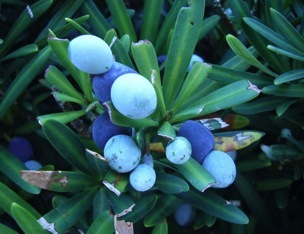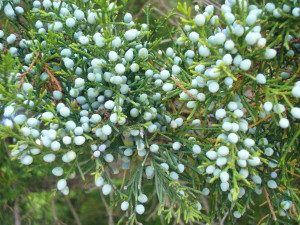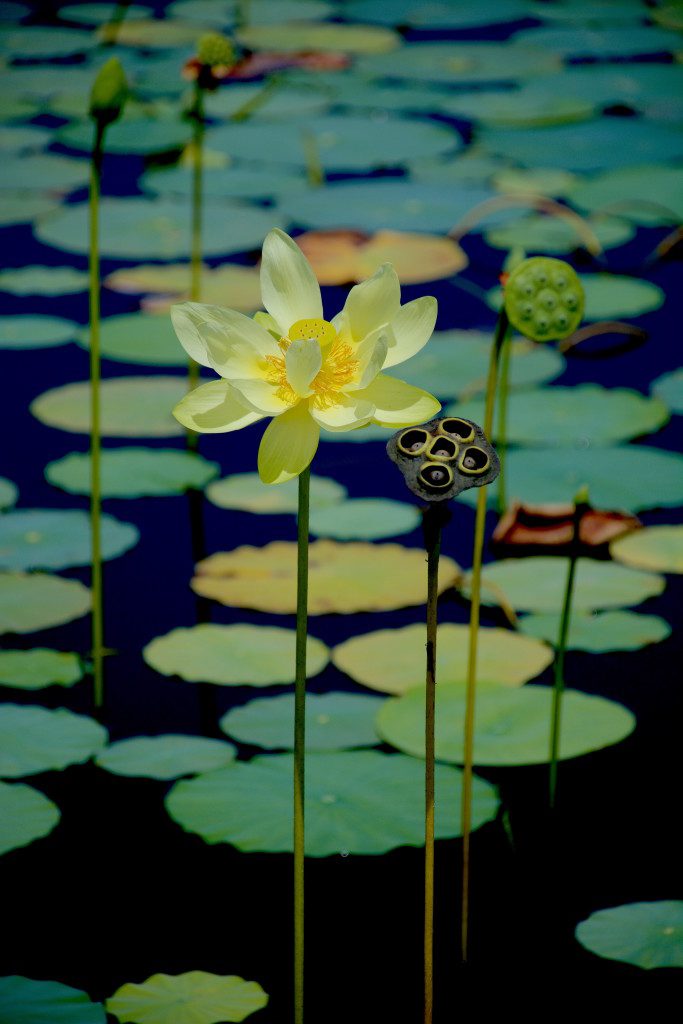
Yellow ponds, that’s how I think of it, or in some places, yellow rivers. That’s because the American Lotus is in blossom. The first time I saw a small lake of these blossoms was when an old dry lakebed was deepened for a housing development. The next spring suddenly what was for decades a dry lake was full of American Lotus blossoms. This is because the seeds can stay viable some 400 years, or so the experts report. Talk about a survival food! There are multiple edible parts on the American Lotus but I prefer the seeds. I also think when collecting by hand the seeds proved to be the most calories for the least amount of work. The roots are edible but digging them up can be a messy, laborious job. Locally American Lotus are easy to find now: Just look for a lake with large yellow blossoms on long stems. Further north and west they are a favorite sight on rivers such as the Mississippi. To read more about the American Lotus go here.
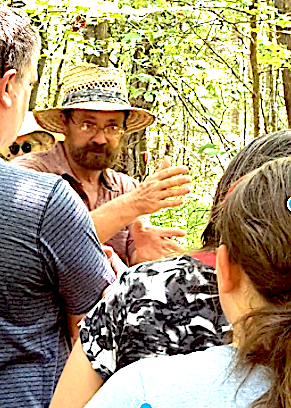
My foraging classes in South Carolina have been scheduled. I will be in Honea Path July 13th and 14th with two classes each day, approximately 9 a.m. and 1 p.m. at the Putney Farm, 1624 Taylor Road, Honea Path. There may be a small variation in the schedule between now and then but that’s the foraging plan at the moment. People are signing up. For more information or to get on a list for a class email either me at GreenDeane@gmail.com or the Putney Farm at putneyfarm@aol.com. There is also more information directly below in Foraging Classes.

Foraging classes this weekend are in the greater Tampa/St. Petersburg area. I don’t know if I will travel over each day or overnight and get in some cast netting time. (I own five and enjoy casting for dinner.) The Saturday class is in Largo, which used to be a farm with a lot of interesting species. Sunday’s class is a first of sorts. I’ve had private classes at Ft. Desoto but this is the first public class. Meet at the parking lot of the Bay Pier not the Gulf Pier.
Saturday, June 15th, Eagle Park Lake, 1800 Keene Road, Largo, FL 33771. 9 a.m. to noon. Meet at the pavilion near the dog park.
Sunday, June 16th, Ft. Desoto Park, 3500 Pinellas Bayway S. St. Petersburg Fl 33715. Meet at the parking lot of the fishing pier, northeast end of the parking lot. 9 a.m. to noon. There is a fee to get into the park. The fishing pier is the first one you encounter. It’s about halfway along the SW/NE road along the southern end of the park and called the Bay Pier. This is also father’s day so perhaps you can go fishing or swimming after class. High tide is at noon that day at the park. Also that evening at 7:15 pm. there is a “shoot the full moon” event at the park. It is to watch the full moon rise between the Sunshine Skyway Spans.
Saturday, June 22nd, Blanchard Park, 10501 Jay Blanchard Trail, Orlando, FL 32817. 9 a.m. to noon. Meet next to the tennis courts by the YMCA building.
Sunday, June 23rd, Spruce Creek Park, 6250 Ridgewood Ave. Port Orange, 32127. GPS: N 20°05’35.4″ W080°58′.26.2″ 9 a.m. to noon. Meet at the pavilion.
Saturday June 29th: Ft. Meade Outdoor Recreation Area, 1639 Frostproof Highway, Fort Meade, FL 33841. (Frostproof Highway is also Route 98.) 9 a.m to noon. Meet at the brown bathrooms in the middle of the park which is due south from the highway. (Not the tan bathrooms near the intersection.)
Sunday June 30th, John Chestnut County Park: 2200 East Lake Road, Palm Harbor, FL 34685. 9 a.m. to noon. Meet at the trail head of the Peggy Park Nature Walk, pavilion 1 parking lot, inside the park.
Saturday, July 13th, Sunday July 14th, 1624 Taylor Road, Honea Path, South Carolina. Ever want a class with Green Deane but he never seems to come to your neck of the woods? Then mark mid-July on your calendar. Green Deane will have at least four foraging class in Honea Path. Times 9 a.m. and 1 p.m. both Saturday and Sunday, rain or shine (except hurricanes.) Cost is $30 per adult, supervised children free. All of Green Deane’s classes are hands on, walking outside over two to three hours. Wild edible plants, medicinals and perhaps a mushroom or two will be on the agenda. For more information you can contact Putney Farm on Facebook or Green Deane at GreenDeane@gmail.com.
Saturday, July 20th, Blanchard Park, 10501 Jay Blanchard Trail, Orlando, FL 32817. 9 a.m. to noon. Meet next to the tennis courts by the YMCA building.
Sunday, July 21st, Dreher Park, 1200 Southern Blvd., West Palm Beach, 33405. 9 a.m to noon. Meet just north of the science center in the north section of the park.
Saturday, July 27th, Wickham Park: 2500 Parkway Drive, Melbourne, FL 32935-2335. 9 a.m. to noon.Meet at the “dog park” inside the park.
Sunday, July 28th, Bayshore Live Oak Park, Bayshore Drive. Port Charlotte. 9 a.m. to noon. Meet at the parking lot at the intersection of Bayshore Road and Ganyard Street. 9 a.m. to noon.
For more information, to sign up for a class, or to pay of a class go here.
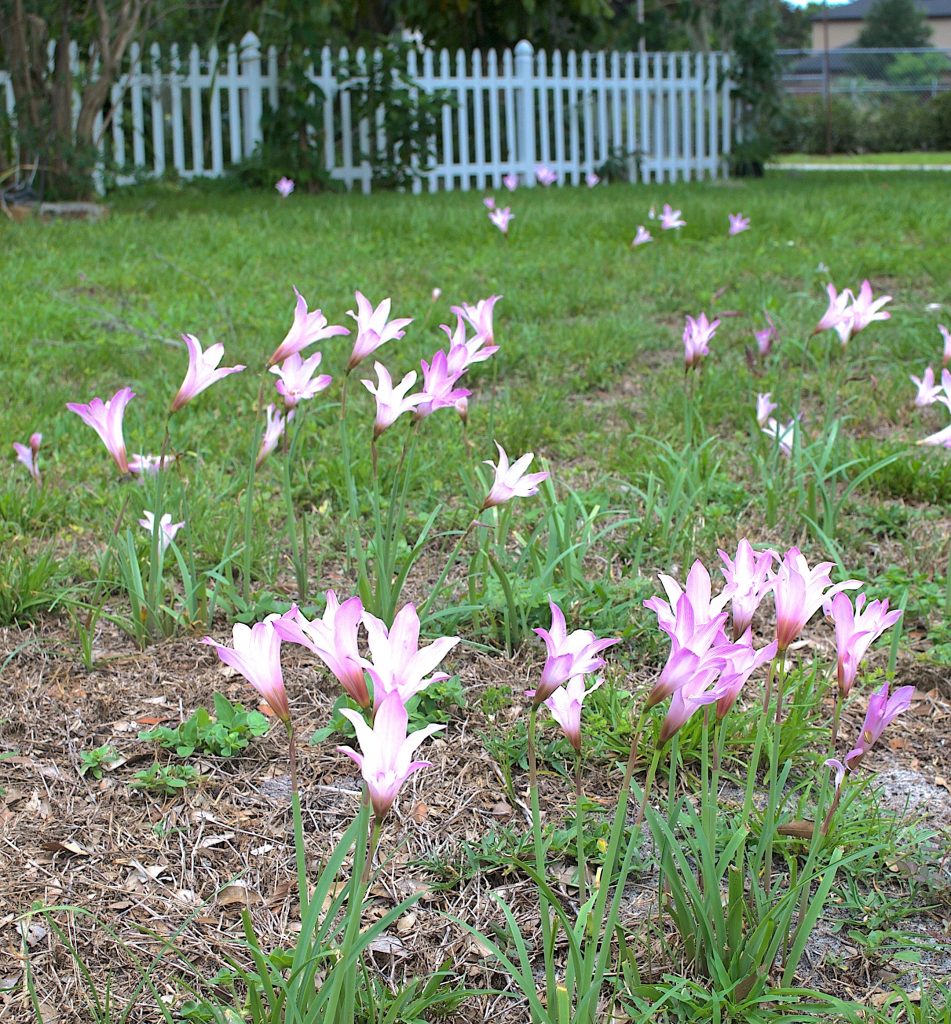
Seasonal rains bring edible mushrooms and a toxic blossom. While the mushroom are just getting going the blossom is the toxic Atamasco lily, aka Rain Lily ( Zephranthes atamasca.) For a threatened species they are seen in a lot of lawns this time of year prompting many emails asking for an identification. These natives like wetlands but a well-watered lawn after seasonal rains will do nicely. The problem with the Atamasco is that it resembles wild garlic before it blossoms (and even has a bulb!) However, it does not have the telltale garlic aroma. Remember if it smells like a garlic AND looks like a garlic you can use it like a garlic. The Atamasco does not have any garlic aroma. It is not edible. All parts are poisonous. And while these in the picture have a pink tinge there are also all-white blossoms.
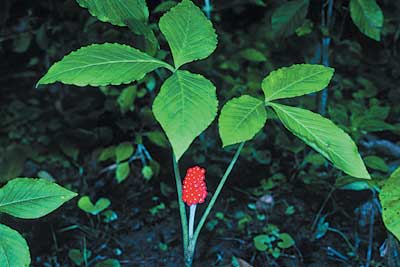
Jack In The Pulpit are strange plants. They’re listed amongst the edible species but barely. One unusual aspect about the species is they readily change sex. After reproducing they become males and do nothing but hang out on the forest floor drinking sunlight and making starch. When enough energy has been collected for reproduction — three or four years — they become females… It’s not a species that does much dating. They like damp, dappled places. We saw some recently during a foraging class in Jacksonville. To read more about Jacks and my microwave experiments with them you can go here.
Perhaps the “Seasons In The Sun” are changing and I don’t mean the song. Some common plant schedules are off this year. Pellitory, a plant rarely seen locally after St. Patricks Day can still be found fresh in shade. In the past I have occasionally seen Pellitory in deep shade in mid-April. But to find some young and fresh in June is quite the surprise. Another plant that is surprising is Podocarpus. I start looking for ripe fruit around August sometimes as late as September. This is early June and I have found some ripe fruit.
One or two species that are confounding the seasons are our Juniper trees, wrongly called the Eastern Red Cedar and Southern Cedar. I’ve seen trees in the northern part of the state heavy with juniper “berries” while locally there was none or none further north but some local trees heavy with berries (actually cones) that have not had them for several years. A few extremes do not a pattern make, but it time patterns might suggest the weather is indeed changing.

Donations to upgrade EatTheWeeds.com and fund a book are going well. Thank you to all who have contributed to either via the Go Fund Me link, the PayPal donation link or by writing to Green Deane POB 941793 Maitland FL, 32794. Recent upgrades have been paid now the Forum needs work and several function problems need to be fixed specifically the search and categories. The other issue is finding an indexing program or function for a real book. Writing programs used to do it automatically if you designated a term for indexing. Now that most books are ebooks most writing programs do not provide and indexing function.

Want to identify a plant? Looking for a foraging reference? Do you have a UFO, an Unidentified Flowering Object you want identified? On the Green Deane Forum we chat about foraging all year. And it’s not just about warm-weather plants or just North American flora. Many nations around the world share common weeds so there’s a lot to talk about. There’s also more than weeds. The reference section has information for foraging around the world. There are also articles on food preservation, and forgotten skills from making bows to fermenting food. One special section is “From the Frightening Mail Bag” where we learn from people who eat first then ask questions later. You can join the forum by clicking on “forum” in the menu.

All My Videos are available for free on You Tube. They do have ads on them so every time you watch a Green Deane video I get a quarter of one cent. Four views, one cent. Not exactly a large money-maker but it helps pays for this newsletter. If you want to see the videos without ads and some in slightly better quality you can order the DVD set. It is nine DVDs with 15 videos on each for a total of 135 videos. Many people want their own copy of the videos or they have a slow service and its easier to order then to watch them on-line. The DVDs make a good gift for that forager you know especially as spring is … springing. Individual DVDs can also be ordered or you can pick and choose. You can order them by clicking on the button on the top right hand side of this page (if your window is open wide enough.) Or you can go here.
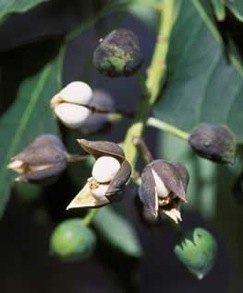
During a class recently I noticed the Chinese Tallow trees are blossoming. The tree poses a challenge. It has an edible fat and a toxic oil. The question is how to easily separate the two. And if “easily” is the wrong descriptor then how can it be made worth a forager’s while? The tree, Triadica sebifera, is an invasive species locally so finding a use for it would help the environment. Also as a source of fat it could literally be a life-saver in time of need because humans cannot survive without fat. In fact one can readily see the fat on the seeds (also called wax.) It just doesn’t render easily.
Each seed has a thick coating of highly saturated fat, one reason why the species is also called the popcorn tree because when in fruit it looks covered by popcorn. By all reports the outer coating is edible and has been used to make candles hence calling it wax. In fact the tree was imported from Asia by Ben Franklin specifically to start a candle-making industry in the South. As a saturated fat the outside is very solid at room temperature. Inside the seed is a liquid oil called stillingia. It is toxic to humans.
The “wax” is supposed to melt at 104 F. I’ve tried frying the fruit. The outer coating of fat stays solid. I’ve tried boiling it. No luck. My readers have tried broiling — the seeds exploded — and micowaving. They got softer but did not melt. In China they soften the fruit in boiling water then scraped them with a fine grater. Separating the fat and the oil was also a science project. Here’s what the student did: First she bought a hand-operated oil expeller. They cost about $150 on the Internet. She put the entire fruit through the press which also heats the material. Out comes a liquid mass that upon cooling has the solid saturated fat on top and the oil on bottom. She went on to make candles out of the “wax” and used the oil in a lamp which won her three science fairs and two scholarships. Way to go!
The next question we ask is whether the “wax” (saturated fat) and the oil will sufficiently separate so the fat can be used as food? Also is it just as stubborn to melt even after being processed this way? My last question would be how digestible is it? The invasive species certainly has a lot of potential. I also wonder if one can just nibble off the white fat and leave the seed alone. You can read more about the Chinese Tallow tree here.
This is weekly issue 359.

